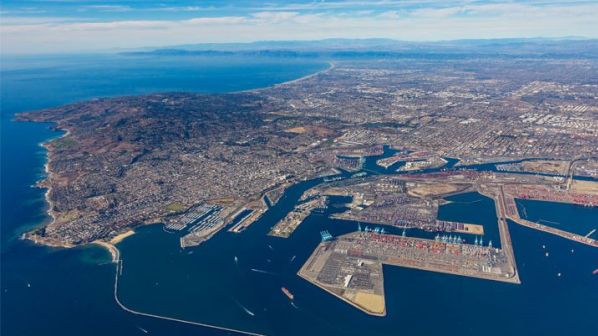The project will expand an existing intermodal rail storage yard on Terminal Island by adding more than 9.4km of track to increase the number of storage tracks from six to 11. The project will improve capacity and use of the Pier 400 on-dock rail yard by up to 525,000 TEUs annually, which represents about a 10% overall increase in capacity for the Port of Los Angeles.
The port will fund the remaining $US 12.4m cost of the $US 34m project.
As a result of increasing on-dock capacity at Pier 400, the project will free up capacity at another major storage and staging yard located on Terminal Island, thus improving overall rail operations throughout the ports of Los Angeles and Long Beach. The project is a critical link between the San Pedro Bay port complex and the Alameda Corridor, which carries about 11% of all waterborne containers entering and exiting the United States. Port officials expect the expanded yard to eliminate an estimated 1250 truck trips per day by 2040.
“Expanding this rail yard creates a ripple effect of intermodal efficiencies within the Port of Los Angeles and throughout the entire San Pedro Bay port complex,” says Port of Los Angeles executive director, Mr Gene Seroka. “It is a key element of regional and state transportation plans to improve safety and traffic conditions along some of our nation’s most crowded commuter and freight corridors.”
The Los Angeles Harbor Commission formally approved the project’s Final Initial Study/Mitigated Negative Declaration in early October, which concluded the environmental review process. The port is currently preparing the final design. The construction contract award is expected by June 2020, with project completion by early 2022.
The Terminal Island Railyard Enhancement Project is one of eight interrelated rail projects collectively known as America’s Global Freight Gateway: Southern California Rail Project. The package consists of rail improvements within the harbour complex, including two at the Port of Los Angeles and grade separation projects at critical junctures across Los Angeles County.

